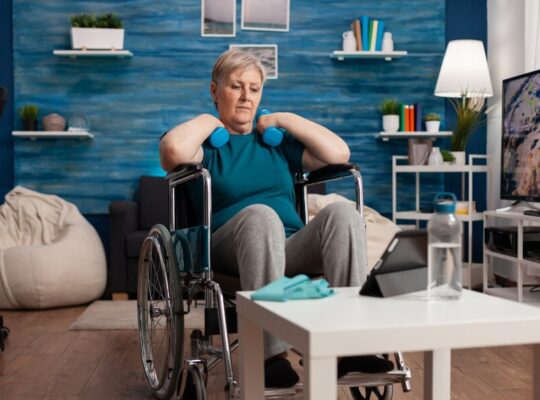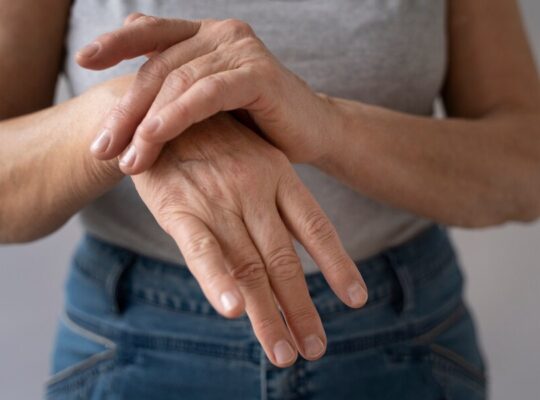What is Patellofemoral Pain Syndrome, or PFPS?
Patellofemoral pain syndrome is characterised by localised anterior knee stiffness or pain. This pain is usually made worse through any activity that puts stress on the knee, such as running, jumping, and even long hours of sitting. The patella glides in the trochlear fossa of the femur, and when tracking of this movement is compromised, the structure becomes inflamed.
Etiology of PFPS
Many factors are associated with the development of PFPS. Understanding these causes may help in preventing or managing the disorder adequately.
Overuse and Repetitive Motion
PFPS is commonly caused by stress continually placed on the knee joint. Anyone engaging in exercises like running, cycling, squatting, or lifting puts too much pressure on the joint, creating an environment that leads to joint irritation. This overuse factor is why the condition is referred to as the runner’s knee, and it is generally known as patellofemoral pain syndrome.
Muscle imbalance and weakness
Muscles around the knee area must be strong to support the joint. Because the kneecap is a moving structure, any quadriceps muscle weakness or uneven distribution of muscle pull can cause kneecap misalignment. Exercises that strengthen the biceps and the back are beneficial for overall strength, although they don’t directly strengthen the knee. For better knee support, focus on exercises that strengthen the knee joint muscles and improve balance.
Improper Footwear
Wearing shoes that lack proper support or cushioning strains the knee joint. Good footwear drastically decreases this risk and benefits those with knee issues, just like how supportive footwear is essential for those dealing with osteoarthritis.
Anatomical Factors
Some people have abnormalities like fallen arches or a high Q angle, predisposing them to develop PFPS. If you notice irregularities in bone or body structure, seek medical advice.
Injury or Trauma
Knee pain and PFPS can also develop from trauma, such as a fall or a direct blow to the knee. This is common in contact sports or activities that involve quick movements, similar to issues seen with soft tissue injuries.
Symptoms of Patellofemoral Pain Syndrome
PFPS symptoms vary but commonly include:
- Pain During Activity: Pain often arises during activities like climbing stairs, running, or lifting.
- Swelling or Tenderness: The knee may feel tender or show slight inflammation.
- Knee Stiffness: After prolonged sitting, bringing the knee into motion can feel stiff.
Knee pain can also arise from other conditions, such as osteoporosis and osteoarthritis.
Overview of Patellofemoral Pain Syndrome
Diagnosis of PFPS may require physical examination by a healthcare provider, along with imaging tests like X-rays or MRI, similar to procedures for bone injuries like femur fractures. The healthcare professional may also discuss your medical history and symptoms.
Treatment Options for Patellofemoral Pain Syndrome
Managing PFPS focuses on reducing knee pain and dysfunction. Here are some effective treatment approaches:
Rest and Ice Therapy
Resting and applying ice to the knee reduces pain and inflammation. This approach is essential in the early stages of recovery to allow healing.
Strengthening Exercises
Exercises targeting quadriceps, hamstrings, and hip muscles improve knee stability. These exercises include lunges, squats, and leg raises performed slowly and steadily. General low back pain exercises can also relieve knee joint pressure by strengthening the core muscles.
Physical Therapy
Physical therapy (PT) is highly effective in treating PFPS. A physical therapist may recommend exercises to address muscle imbalances and increase joint flexibility and mobility. PT is also useful for patients with chronic kidney disease who need low-impact exercises.
Use of Orthotics
People with foot alignment issues may benefit from orthotic insoles to reduce knee pressure. Proper arch support helps in correct knee positioning, significantly decreasing pain.
Medications
Over-the-counter medications like ibuprofen or acetaminophen can manage pain, but they should only be used when necessary and after consulting a doctor.
Lifestyle Modifications
Adjusting daily activities can greatly improve knee health. Low-impact exercises, such as morning walks, are beneficial and gentle on the knees. Maintaining a balanced diet and healthy weight also helps reduce knee strain.
Surgery
Surgery is generally avoided for PFPS unless all other treatments have failed. Surgical options may include procedures to realign the patella or relieve stress on the kneecap.
Patellofemoral Pain Syndrome Prevention
Prevention is key, especially for those at higher risk of knee injuries. Here are some preventive measures:
Strengthen Your Muscles
Strong quadriceps and hamstrings help reduce knee injury risk. Include exercises that strengthen the legs, and consider routines that balance muscle development.
Warm-up and Stretch
Dynamic stretching before activity prepares muscles and joints, while post-activity stretching prevents soreness.
Wear proper footwear
Supportive shoes help distribute pressure evenly and reduce knee strain. This advice is similar for people dealing with conditions like flat feet.
Practice Good Form
Proper exercise, whether for running or lifting weights, prevents stress on the knee joint and reduces injury risk.
FAQs
1. What causes patellofemoral pain syndrome?
PFPS typically results from muscle imbalances, improper footwear, or repetitive knee movements.
2. Can PFPS be cured?
There’s no permanent cure, but physical therapy and lifestyle changes can effectively manage it.
3. How long does PFPS recovery take?
Recovery can take several weeks to months, depending on the injury’s severity and the treatment used.
4. Are home remedies effective for PFPS?
Yes, home remedies like rest, ice application, and specific exercises can alleviate pain.
5. Can PFPS lead to arthritis?
While PFPS itself doesn’t cause arthritis, prolonged knee stress may contribute to joint issues over time.
6. What exercises are recommended for PFPS?
Exercises such as lunges, leg lifts, and core strengthening exercises benefit the knee joint.
7. Should I avoid running if I have PFPS?
Avoid activities that cause pain. Consult a physical therapist for personalised advice.
8. How can I prevent PFPS?
Prevent PFPS by strengthening muscles, using supportive footwear, and maintaining proper form during physical activities.
9. Can improper footwear worsen PFPS?
Yes, wearing unsupportive shoes can strain the knee joint, leading to or worsening PFPS symptoms.
10. Are people with flat feet more prone to PFPS?
Yes, flat feet may increase the risk as they alter knee alignment. Custom orthotics can help.












